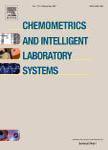版权所有:内蒙古大学图书馆 技术提供:维普资讯• 智图
内蒙古自治区呼和浩特市赛罕区大学西街235号 邮编: 010021

作者机构:Univ Autonoma Guadalajara Fac Ciencias Quim Grp Invest Mat & Fenomenos Superficie Ave Patria 1201 Zapopan 45129 Jalisco Mexico Univ Granada UEQ UGR Fac Ciencias Dept Quim Inorgan Unidad Excelencia Quim Aplicada Biomed & Medioambi Granada 18071 Spain
出 版 物:《CHEMOMETRICS AND INTELLIGENT LABORATORY SYSTEMS》 (Chemometr. Intelligent Lab. Syst.)
年 卷 期:2025年第262卷
核心收录:
学科分类:07[理学] 0804[工学-仪器科学与技术] 0703[理学-化学] 0714[理学-统计学(可授理学、经济学学位)] 0811[工学-控制科学与工程] 0701[理学-数学] 0812[工学-计算机科学与技术(可授工学、理学学位)]
基 金:Consejeria de Universidad, Investigacion e Innovacion ERDF Andalusia MICIU/AEI [PID2021-127803OB-I00] ERDF A way of making Europe ERDF/EU European Union European Union NextGenerationEU/PRTR UAG C-EXP-247-UGR23
主 题:Agro-industrial waste Bayesian regularized artificial neural network Mercury intrusion porosimetry Porous texture Surface chemistry
摘 要:Traditional methods for evaluating adsorption mechanisms rely on material characterization and its linear relationship with adsorption capacity. However, this approach has limitations, as it assumes a linear correlation, and when this fails, it is often speculated that multiple mechanisms are involved without detailing their contributions. This study overcomes these challenges by using artificial intelligence to analyze the adsorption of Cu (II) onto alternative adsorbents. An Artificial Neural Network (ANN) combined with 3D porous texture simulations, based on mercury intrusion porosimetry, established non-linear correlations among 13 textural and chemical characteristics and adsorption capacity. The material with the highest adsorption capacity (107 mg g(-1)) featured an accessible porous texture rich in -COOH groups. The ANN quantified the contributions of two governing mechanisms: diffusion through the porous texture (67.07 %) and interaction with -COOH sites (32.93 %). Chemometric analysis revealed that the greatest weight in the ANN model was attributed to the average pore diameter (17.11 %), which was consistent with the characterization of the saturated material by SEM-EDX, showing that adsorption occurs primarily in the exposed cavities of the material. The adsorption mechanism proposed by the ANN study explains the atypical points observed in the different materials, showing that the adsorption process is governed by a combination of two mechanisms: one associated with the porous texture and the other with surface chemistry. The findings provide a deeper understanding of the key variables influencing adsorption and offer guidance for optimizing material synthesis.